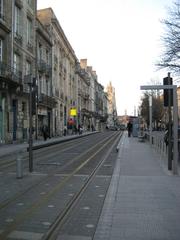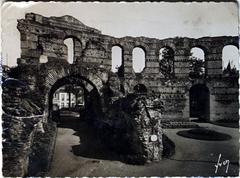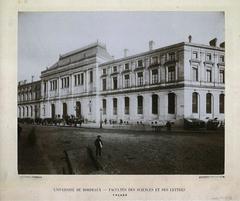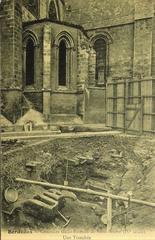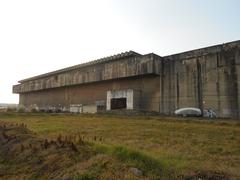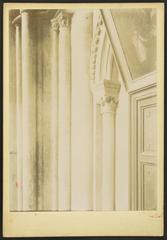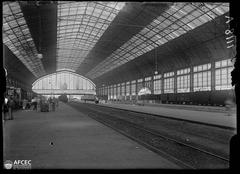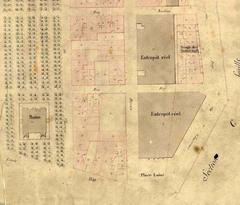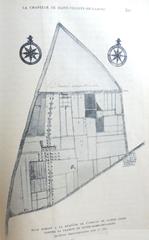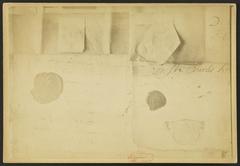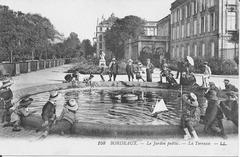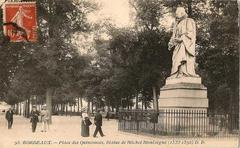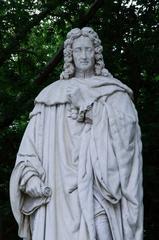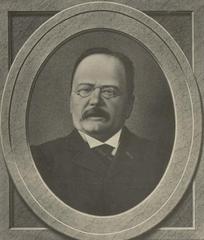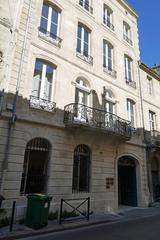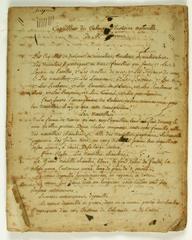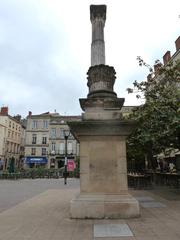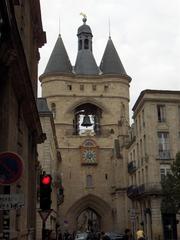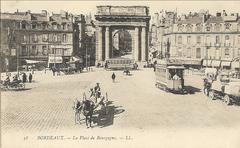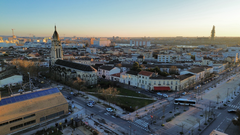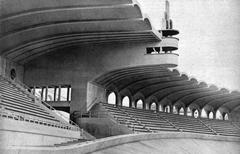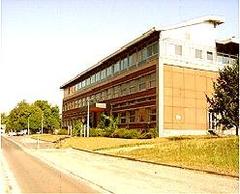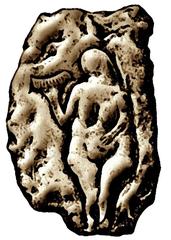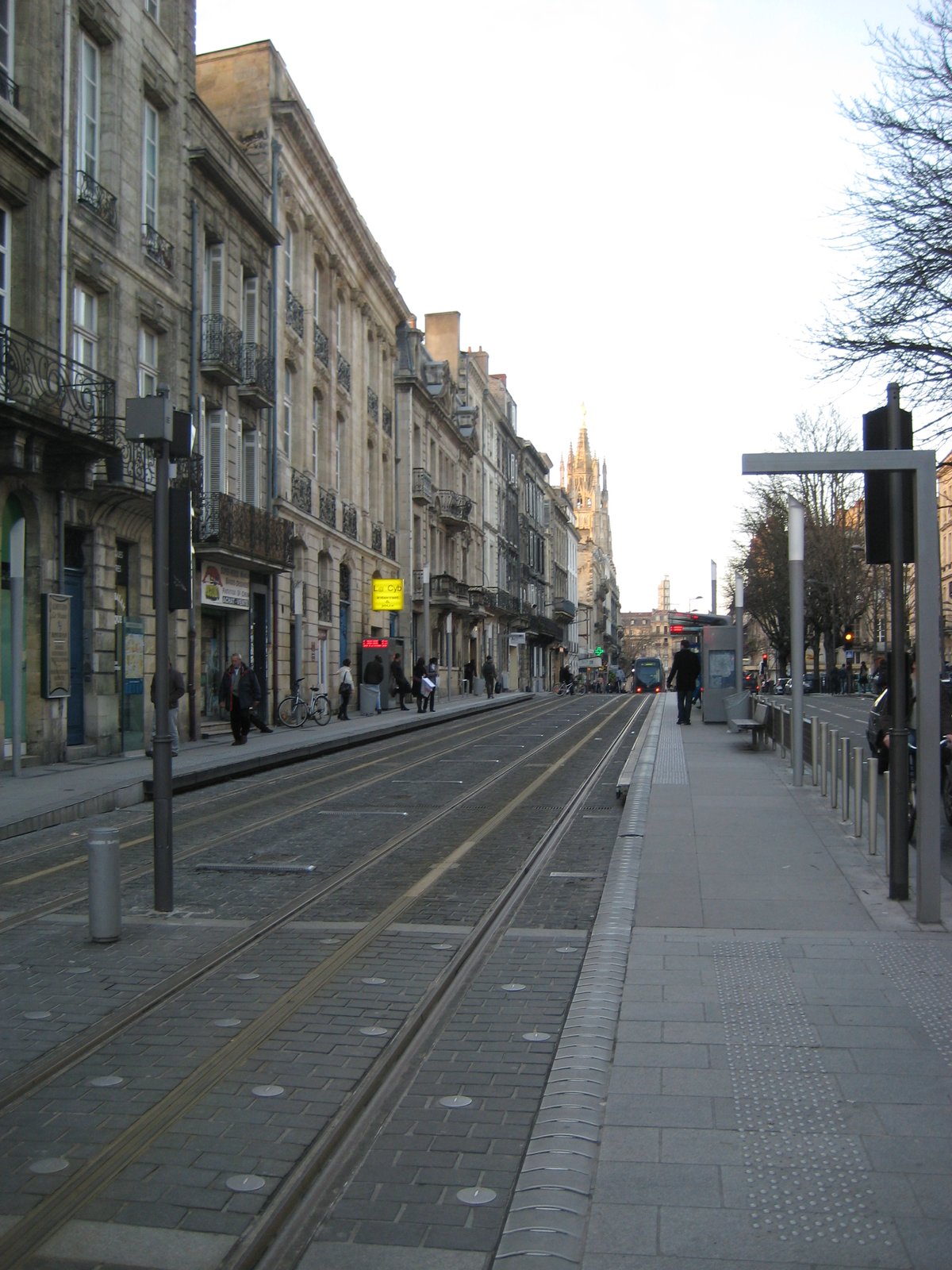
Guide to Visiting Musée d’Aquitaine
Date: 18/07/2024
Introduction
The Musée d’Aquitaine, located in the vibrant city of Bordeaux, France, is a cultural institution that offers an extensive journey through the region’s rich history. Housed in a former 18th-century university building, the museum encapsulates the essence of Bordeaux and the Aquitaine region, showcasing artifacts that span millennia—from prehistoric times to the modern era. Established in the aftermath of the French Revolution, the museum’s collection was initially formed from nationalized treasures confiscated from aristocratic families and religious institutions. This historical context provides a fascinating backdrop as visitors explore the diverse exhibits (Musée d’Aquitaine Official Website).
The building itself is steeped in history, having once served as the convent of the Order of the Feuillants before becoming the Faculty of Arts and later the City Library. As you walk through its halls, you can feel the weight of centuries of scholarly pursuit and cultural preservation. The museum’s collection is particularly notable for its portrayal of Bordeaux’s maritime legacy during the Middle Ages and the Renaissance, as well as the influence of pivotal figures like Eleanor of Aquitaine (Musée d’Aquitaine - History, Tickets, and Visiting Hours).
Whether you’re a history enthusiast or a casual visitor, the Musée d’Aquitaine offers a comprehensive and engaging exploration of Bordeaux’s past. This guide will provide you with all the essential information you need for a memorable visit, including details on permanent and temporary exhibitions, visiting hours, ticket prices, guided tours, accessibility, and nearby attractions. By the end of this guide, you’ll be well-prepared to delve into the rich tapestry of Aquitaine’s history and culture.
Table of Contents
- Introduction
- A History Steeped in Time
- Permanent Exhibitions
- Bordeaux in Prehistory and Protohistory
- Roman Aquitaine: Cities and Territories
- The Middle Ages: Aquitaine at the Heart of a Thousand-Year-Old History
- Bordeaux, Gateway to the World: 15th - 18th Centuries
- Bordeaux in the 19th Century: Birth of a Modern City
- Bordeaux, 20th Century: A Changing Society
- Temporary Exhibitions
- Practical Information
- Special Events and Unique Features
- Visitor Tips
- FAQ
- Conclusion
A History Steeped in Time
From Monastery to Museum: A Building with Stories to Tell
The Musée d’Aquitaine’s home, a magnificent edifice with a grand facade, has a fascinating past of its own. Originally, the building served as the convent of the Order of the Feuillants, a Catholic monastic order. Following the French Revolution, the building underwent a transformation, becoming the Faculty of Arts and later, the City Library. This rich history is palpable as you walk through the museum’s halls, each room whispering tales of centuries past.
A Collection Spanning Millennia
The Musée d’Aquitaine boasts a diverse collection, showcasing artifacts from prehistory to the modern era. Visitors can marvel at prehistoric tools and remnants of the Roman era, a testament to the region’s ancient roots. The museum’s collection truly shines in its portrayal of Bordeaux’s pivotal role during the Middle Ages and the Renaissance.
Bordeaux’s Golden Age: A Maritime Powerhouse
The museum vividly illustrates Bordeaux’s flourishing maritime trade during the Middle Ages, a period when the city established itself as a major port for wine and other goods. Exhibits showcase intricate nautical instruments, maps from bygone eras, and artifacts recovered from shipwrecks, offering a glimpse into the city’s seafaring legacy.
The Eleanor Factor: A Queen’s Influence
One of the most compelling aspects of the museum is its focus on Eleanor of Aquitaine, a formidable woman who left an indelible mark on history. Born in the 12th century, Eleanor was the Duchess of Aquitaine in her own right, inheriting a vast territory that encompassed much of southwestern France. Her marriage to Louis VII, King of France, and later to Henry II, King of England, intertwined the destinies of these nations, sparking centuries of conflict and cultural exchange.
The museum houses artifacts and documents that shed light on Eleanor’s life and her impact on Aquitaine. Visitors can delve into the complexities of medieval politics, the intricacies of courtly life, and the cultural blossoming that occurred under Eleanor’s patronage.
Beyond the Middle Ages: Tracing Modern Bordeaux
While the Musée d’Aquitaine provides a captivating journey through the region’s ancient and medieval past, it doesn’t neglect the more recent centuries. The museum dedicates space to the 18th and 19th centuries, a period of significant urban development and economic growth for Bordeaux. Exhibits explore the city’s role in the transatlantic slave trade, a dark chapter in its history that the museum confronts with honesty and sensitivity.
Permanent Exhibitions
The permanent exhibitions at the Musée d’Aquitaine are structured chronologically, allowing visitors to follow the evolution of the region over time.
Bordeaux in Prehistory and Protohistory
This section delves into the earliest traces of human presence in the Aquitaine region, showcasing artifacts from the Paleolithic, Neolithic, and Bronze Ages. Visitors can marvel at ancient tools, pottery, and burial remains, gaining insights into the lives of the region’s first inhabitants.
Roman Aquitaine: Cities and Territories
Transport yourself back to the Roman era as you explore the grandeur of Burdigala, the Roman name for Bordeaux. This section boasts an impressive collection of Roman artifacts, including mosaics, sculptures, and everyday objects, illustrating the city’s prosperity and significance as a major Roman port.
The Middle Ages: Aquitaine at the Heart of a Thousand-Year-Old History
The Middle Ages come alive in this exhibition, which highlights Aquitaine’s pivotal role in European history. Visitors can discover the region’s transformation under English rule, the impact of the Hundred Years’ War, and the flourishing of religious life through intricate sculptures, illuminated manuscripts, and architectural fragments.
Bordeaux, Gateway to the World: 15th - 18th Centuries
This exhibition chronicles Bordeaux’s emergence as a major commercial hub during the Renaissance and Enlightenment periods. Visitors can delve into the city’s maritime trade, its connections with the New World, and the opulence of its architecture and decorative arts. Portraits of prominent figures, ship models, and luxurious furniture offer a glimpse into this prosperous era.
Bordeaux in the 19th Century: Birth of a Modern City
Witness the dramatic transformation of Bordeaux during the 19th century, marked by industrialization, urban development, and social change. This section showcases the city’s architectural evolution, the rise of new industries, and the daily lives of its inhabitants through paintings, photographs, and everyday objects.
Bordeaux, 20th Century: A Changing Society
The 20th century brought about significant shifts in Bordeaux’s social fabric, political landscape, and cultural identity. This exhibition explores these changes through a collection of photographs, documents, and personal testimonies, offering insights into the city’s experience during the World Wars, the post-war boom, and the emergence of contemporary Bordeaux.
Temporary Exhibitions
In addition to its permanent collection, the Musée d’Aquitaine hosts a dynamic program of temporary exhibitions throughout the year. These exhibitions often focus on specific themes, historical events, or artistic movements, providing visitors with fresh perspectives on the region’s rich heritage. To stay updated on the current temporary exhibitions, it is recommended to visit the museum’s official website or inquire at the information desk upon arrival.
Practical Information
Visiting Hours and Ticket Prices
- Visiting Hours: The museum is open from Tuesday to Sunday, 11 AM to 6 PM. It is closed on Mondays and public holidays.
- Ticket Prices: General admission is €8. Reduced rates are available for students, seniors, and groups. Admission is free for children under 18 and on the first Sunday of each month.
Guided Tours and Accessibility
- Guided Tours: The museum offers guided tours in multiple languages. Check the official website for schedules and booking information.
- Accessibility: The museum is wheelchair accessible, and assistance is available upon request.
Location and Getting There
- Address: 20 Cours Pasteur, 33000 Bordeaux, France
- By Tram: Line B - Stop at “Musée d’Aquitaine”
- By Bus: Lines 1, 4, 15, and 24 - Stop at “Musée d’Aquitaine”
- By Car: Limited parking is available in the surrounding streets. Several public parking garages are located within walking distance of the museum, including Parking des Quinconces and Parking Camille Julian.
- By Bicycle: Several VCub bike-sharing stations are located near the museum.
Nearby Attractions
The museum is close to other historical sites such as the Bordeaux Cathedral, Place de la Bourse, and the Grosse Cloche.
Where to Eat
- Le Quatrième Mur: A Michelin-starred restaurant offering contemporary French cuisine in a sophisticated setting.
- La Tupina: A Bordeaux institution serving traditional southwestern French dishes.
- Le Gabriel: Located within the Grand Théâtre, this elegant restaurant offers refined dining with views of the Place de la Comédie.
- Numerous cafes and brasseries: For a quick bite or a casual meal, there are plenty of cafes and brasseries in the area surrounding the museum.
Where to Stay
- Grand Hôtel de Bordeaux & Spa: A luxurious 5-star hotel located on the Place de la Comédie, offering stunning views of the Grand Théâtre.
- Hôtel de Seze: A charming 4-star hotel housed in an 18th-century mansion, offering elegant accommodation and a central location.
- Hôtel des Quinconces Bordeaux Centre: A comfortable and affordable 3-star hotel located near the Place des Quinconces.
- Numerous guesthouses and apartments: For a more independent stay, there are many guesthouses and apartments available for rent in the area.
Special Events and Unique Features
The Musée d’Aquitaine hosts a variety of special events, including temporary exhibitions, educational workshops, and cultural performances. These events provide deeper insights into specific aspects of Aquitaine’s history and culture, making every visit unique.
Visitor Tips
- Allocate sufficient time: The Musée d’Aquitaine houses a vast collection, and exploring it thoroughly can take several hours. Plan your visit accordingly to ensure you have ample time to appreciate the exhibits.
- Audio guides: Enhance your experience by renting an audio guide, available in multiple languages, which provides detailed commentary and insights into the collections.
- Guided tours: For a more immersive experience, consider joining a guided tour led by knowledgeable museum staff. These tours offer valuable context and behind-the-scenes information.
- Special events: The museum regularly hosts special events, workshops, and lectures related to its exhibitions. Check the museum’s website or inquire at the information desk for upcoming events that coincide with your visit.
- Photography: Photography for personal use is generally permitted in the permanent exhibitions. However, flash photography and the use of tripods may be restricted. Always check for signage or inquire with staff if unsure.
- Accessibility: The Musée d’Aquitaine is accessible to visitors with disabilities. Wheelchairs are available for loan, and elevators provide access to all floors.
- Shop and café: The museum has a shop offering a selection of books, souvenirs, and gifts related to the collections. A café is also available for refreshments.
FAQ
What are the visiting hours for the Musée d’Aquitaine? The museum is open from Tuesday to Sunday, 11 AM to 6 PM. It is closed on Mondays and public holidays.
How much do tickets to the Musée d’Aquitaine cost? General admission is €8. Reduced rates are available for students, seniors, and groups. Admission is free for children under 18 and on the first Sunday of each month.
Are guided tours available at the Musée d’Aquitaine? Yes, the museum offers guided tours in multiple languages. Check the official website for schedules and booking information.
Is the Musée d’Aquitaine accessible for visitors with disabilities? Yes, the museum is wheelchair accessible, and assistance is available upon request.
What are some nearby attractions to the Musée d’Aquitaine? The museum is close to other historical sites such as the Bordeaux Cathedral, Place de la Bourse, and the Grosse Cloche.
Conclusion
The Musée d’Aquitaine stands as a testament to the enduring power of the past. It’s a place where visitors can connect with history on a personal level, exploring the lives of those who came before and gaining a deeper understanding of the forces that shaped Bordeaux and the Aquitaine region into the vibrant cultural hubs they are today. For the latest updates and more information, be sure to check the museum’s official website and follow their social media channels.
